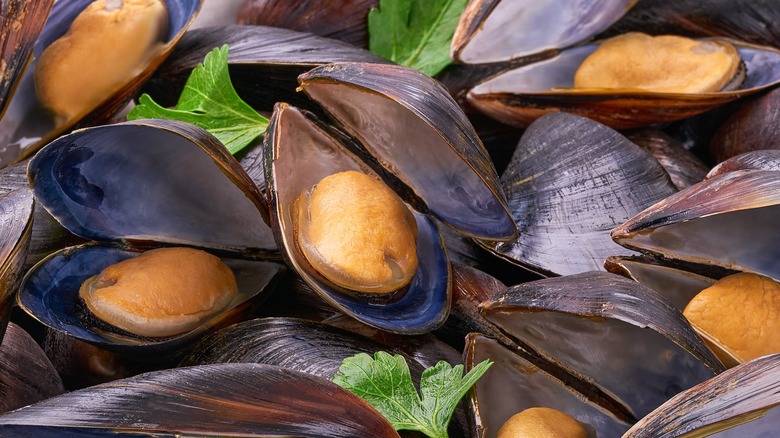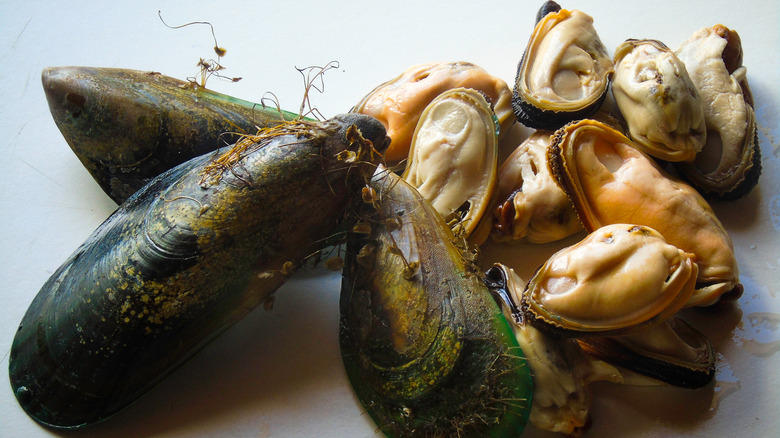What It Actually Means To Debeard Mussels
You may love to eat them dressed in a coconut curry sauce or stewed in some creamy garlic, but ultimately, you'll take the time to pluck the mussel from its shell with a satisfying slurp. There is something special about seafood that quite a few of us have an appreciation for, and shellfish is the kind of delicacy offered by the sea that is hard to pass up.
But since prices for food aren't getting any lower, you may want to take seafood into your own hands this season and make some delectable meals for yourself at home for your next dinner party, celebration, or simply as a way to convince yourself to get back in the kitchen and have some fun. But here's the deal: When working with mussels, you have to make sure they are nice and clean before cooking them in whatever delicious sauce you've whipped up for the occasion, or else you're going to have some gritty-tasting shellfish on your hands (via Serious Eats).
Beards are made of not-so-yummy membrane
It's a basic rule of cooking that you should clean the ingredients before using them. But cleaning mussels is a bit more of a complicated process than scrubbing down potatoes. According to Knorr, rope-grown mussels are typically cleaner than seabed mussels. However, you should still go through the effort to clean them out. You'll need to discard any mussels that have already opened and run the ones that are tightly closed under running water. But despite all the scrubbing you might do, you'll probably find a few strands of beard hanging on for dear life.
Mussel beards are what the mollusk uses to adhere to objects when it is living in the water. Serious Eats explains that farm-raised mussels usually come debearded, but if you find one, grab it firmly and tug down towards the hinged end of the shell. If pulling on the beard strands doesn't work, Epicurious suggests using a sharp knife to carefully cut away the beard. The good news is that after your muscles are clean and debearded, you can get to cooking.

